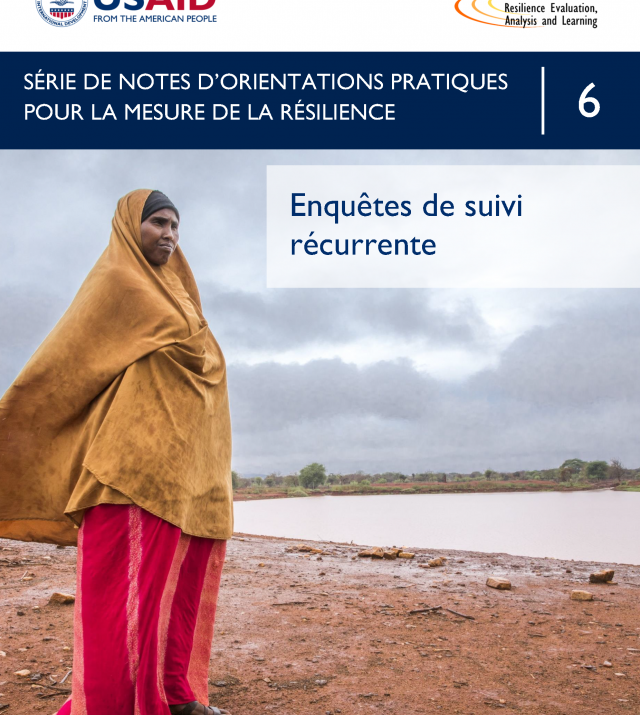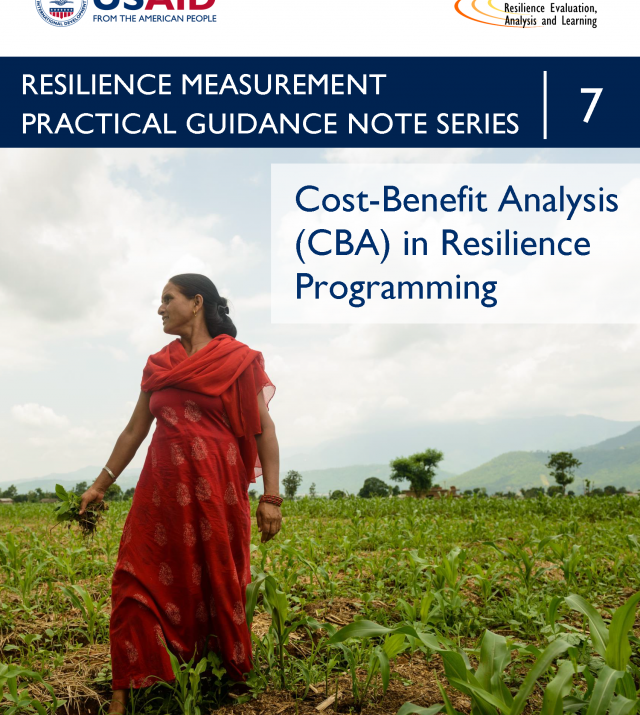
Resilience and Resilience Capacities Measurement Options

Given the range of USAID programs trying to capture changes in resilience promoted through their invesments, there is a need for measurement options that better reflect the goals and available resources of these different programs. This guidance presents Light, Intermediate, and Full approaches for analyzing resilience, each of which reflects a different level of effort - and budget - in terms of the survey instrument and analysis used.
The resources included in this page are intended to be used together for measuring and analyzing resilience in relevant USAID-funded activities.
The Resilience and Resilience Measurement Options were launched during an event in Washington, DC (and online) on November 8, 2018. View the event recording and presentation
View the Resilience and Resilience Capacities Measurement Options overview postcard here.
Resilience and Resilience Capacities Measurement Options Household Questionnaire
This household questionnaire was developed as part of the resilience instrument (which involves a household and a community questionnaire) to be used with the Food for Peace (FFP) core household questionnaire. Other USAID offices (e.g., BFS) may need to adjust references of specific FFP modules/questions to match their own core questionnaire.
Resilience and Resilience Capacities Measurement Options Full Approach Community Questionnaire
This community resilience questionnaire was developed as part of the resilience instrument (which involves a household and community questionnaire) to be used with the Food for Peace (FFP) core household questionnaire.
Resilience and Resilience Capacities Measurement Options Full Approach Enumerator Guidance
The resilience instrument employed as part of USAID’s core household questionnaire gathers
data to serve two purposes:
- to identify the shocks and stressors that have the greatest impact on the food security and well-being of individuals, households and communities and/or occur with the greatest frequency. Examples of shocks and stressors include flooding, drought, land degradation, and other shock events or chronic conditions.
- to identify the resilience capacities that are critical to mitigate the impact of, effectively deal with, and respond to shocks and stressors.
Resilience and Resilience Capacities Measurement Options Full Approach Methodological Guide
This document provides guidance on calculating individual components of resilience capacity as well as the three resilience capacity indices absorptive, adaptive, and transformative capacities – and an overall resilience index.

